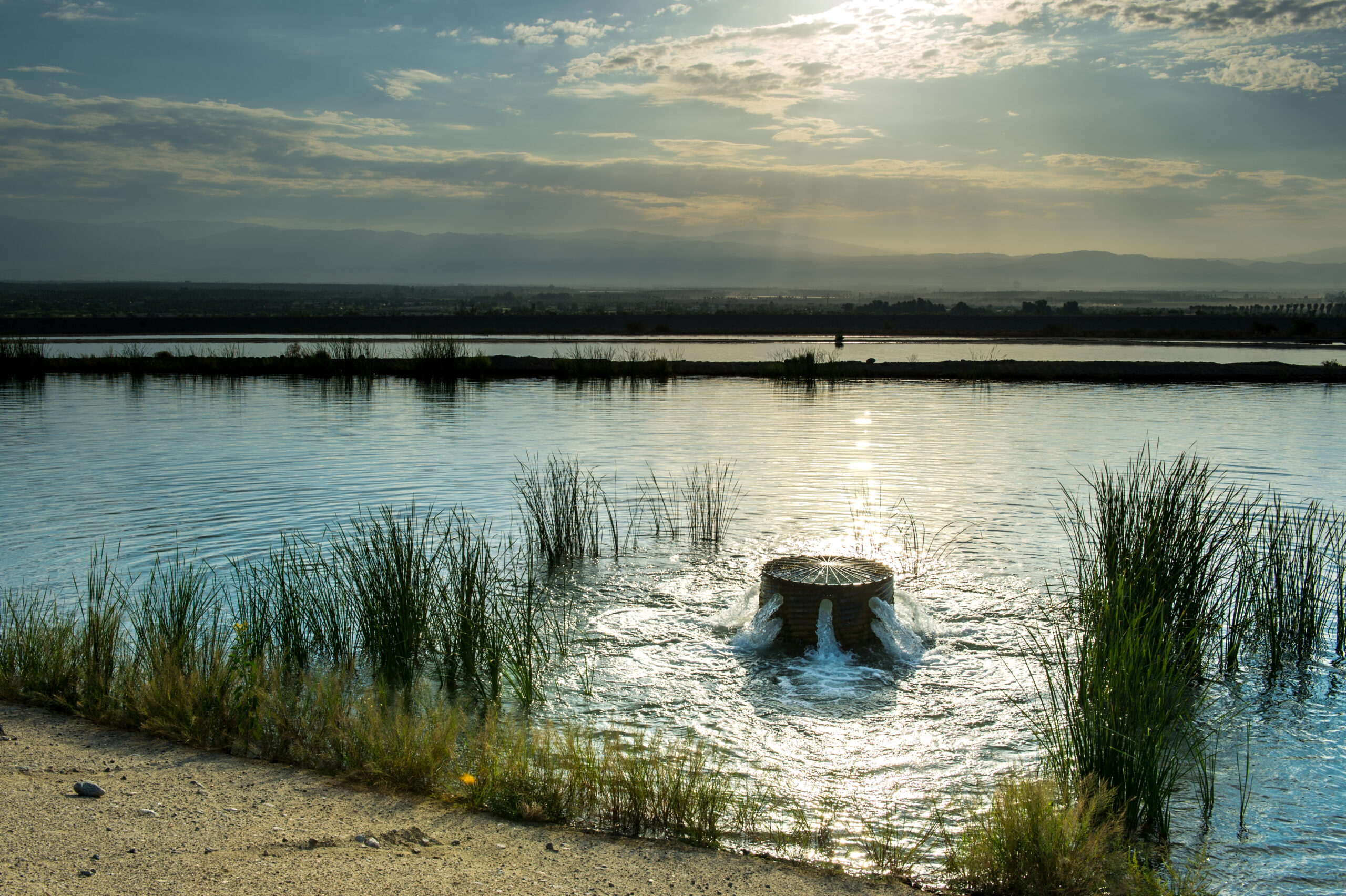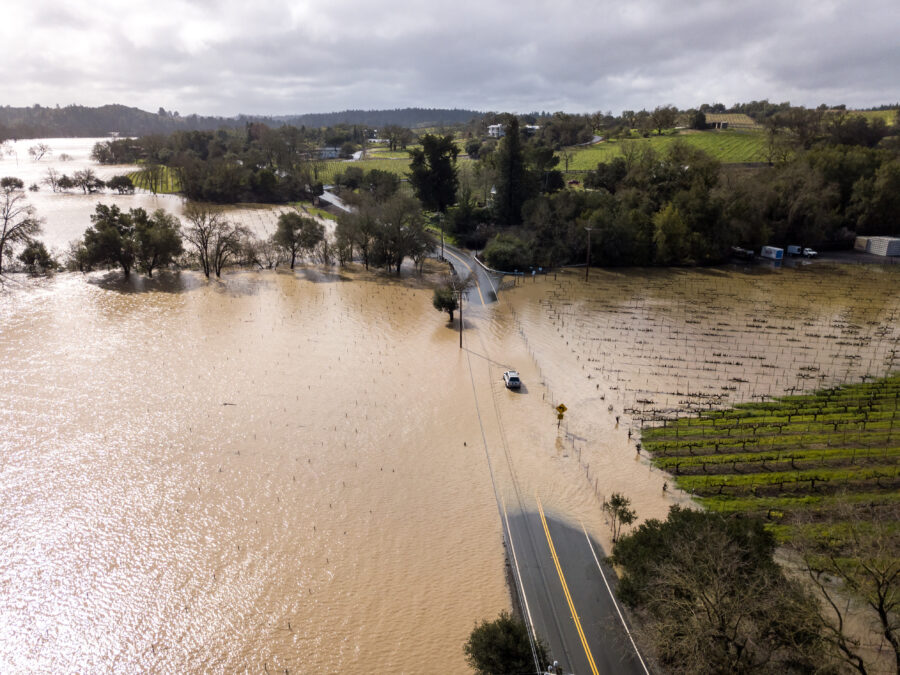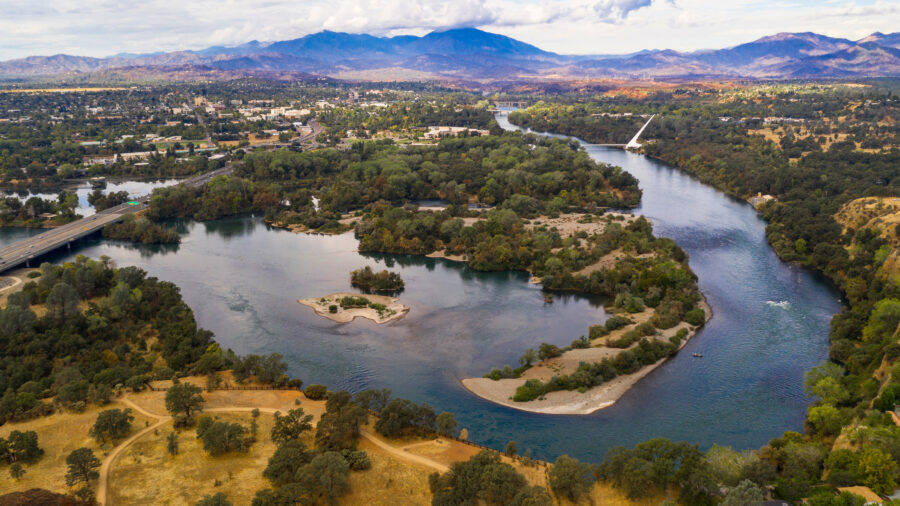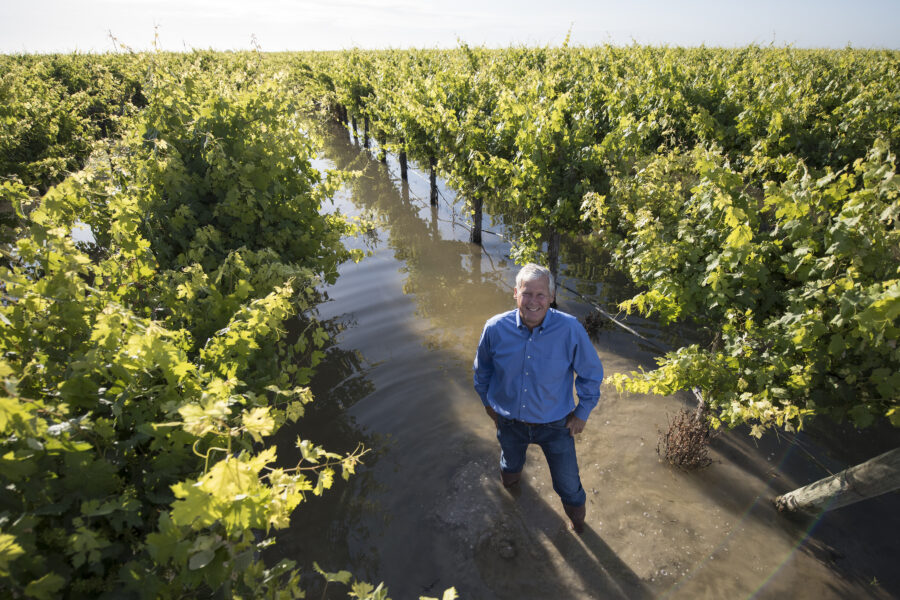
Photo: Kelly M. Grow / California Department of Water Resources
On September 4th, we had the distinct privilege of kicking off our 2024 fall webinar series, “Recharging California,” with a conversation between Sustainable Conservation CEO Ashley Boren and Climate Scientist Dr. Daniel Swain. Daniel holds joint appointments as a research scientist within UCLA’s Institute of the Environment and Sustainability and a research fellow in the Capacity Center for Climate and Weather Extremes at the National Center for Atmospheric Research. He engages extensively with journalists and other media partners, serving as a climate and weather science liaison to print, television, radio, and web-based outlets to share accessible and accurate climate change coverage. Furthermore, his popular blog and Twitter account unofficially make him social media’s preeminent California climate scientist.
The discussion was so rich and wide-ranging that we decided to revisit some key takeaways about our climate reality — and the solutions that can build a more climate resilient California.
Our Climate Outlook: An Ever-Larger Sponge
“We’re now in the future that was predicted 20, 30 years ago.”
In his research, Daniel chiefly focuses on how weather extremes are changing and threatening life in California. The increasingly frequent and dramatic shifts from drought-to-deluge-and-back have been widely referred to as “climate whiplash,” and it’s exceedingly likely that Californians have noticed this exact phenomenon.
“The reason I focus on this notion of whiplash or volatility is because it’s often the extremes at both ends of the hydroclimate spectrum that matter from a human and environmental impacts perspective,” Daniel said.In the past 12-13 years, California has experienced more than its fair share of climate whiplash. Daniel cited two discrete record-breaking droughts, extraordinarily intense precipitation events, and some of the largest and most destructive wildfires in modern California history within this time frame.
So, how can our climate be getting both drier and wetter? To explain this oxymoron, Daniel uses the “expanding atmospheric sponge effect,” which calls upon the humble kitchen sponge to describe the increased ceiling of precipitation intensity and increased evaporative demand in a warmer climate. It follows these steps:
The “atmospheric sponge” helps explain the irony of California’s intense 2024 wildfire season following two wet winters. Intense winter rain and snow fueled plant growth, but the summer’s record-breaking heat has dried it out, turning it into fire-ready fuel. In the winter, more water wrung out from the sponge, and in the summer, more water soaked up. A warmer atmosphere is part of a positive feedback loop that amplifies the risk of drought, flood, and fire.
Though the “atmospheric sponge” seems simple, its impact is far from intuitive. We often imagine a future California as parched desert, but the atmospheric sponge helps tell a different story.
“At some point, we’re going to see a decade where we experience more flood than drought. And I think that may still catch some folks by surprise,” Daniel said.The floods of the future will look fundamentally different from those of the past. For starters, Daniel explained that it’s very unlikely that Californians will live through a winter cold as 2022-2023 again in their lifetimes. Warmer winters means less precipitation will fall as snow and more will fall as rain. With less snow to runoff in the spring and summer, more water will run through California’s rivers, streams, and water infrastructure during winter rains, increasing the chances of devastating floods.
In 2024, California is about 2.5-3 degrees Fahrenheit warmer than it was a century ago. The weather whiplash Californians have already felt is evidence of a rapidly growing atmospheric sponge. But to Daniel, climate science isn’t merely a way to paint a bleak picture of our future life on the West Coast — it’s a means to develop adaptive and lasting solutions.

Flooding in Healdsburg in 2019
21st Century Adaptation: Green Infrastructure and Recharge
“How do you co-manage the risks of drought and flood?”
California’s water management capabilities have historically been defined by our state’s water conveyance infrastructure, nearly all of which was constructed at some point in the 20th century. And, as discussed above, a lot has changed in the past century.
“We can’t ignore the fact that the water systems we have were built using old technologies for a climate that no longer exists already, and that certainly isn’t going to exist a few decades from now,” Daniel said.While our infrastructure has mostly been able to protect Californians from droughts and floods so far, it’s important to acknowledge that it is inherently limited and prohibitively expensive to update or augment. Furthermore, ecosystem interruptions and environmental injustices are hard to right in decades-old concrete. So how do we bolster our state’s water infrastructure in ways that are climate-adaptive, scalable, affordable, and equitable? This is where green infrastructure and natural systems step in as a more adaptive, cost-effective solution.
Leveraging Floodplains
Floodplains are a quintessential example of green infrastructure due to the climate resilience and multiple co-benefits they present. Primarily, natural or reactivated floodplains can absorb excess floodwaters to reduce downstream flood risk for communities and ecosystems — effectively increasing the short-term water storage capacity of the state. When holding diverted floodwater, floodplains also facilitate groundwater recharge and provide critical migratory bird habitat — all while increasing the open space available for human recreation year-round.
Daniel cited the Yolo Bypass in the Sacramento Valley as a successful example of this strategy. This 20-mile-wide floodplain absorbs excess floodwaters from the Sacramento River during high-flow events, preventing catastrophic flooding downstream in Sacramento. At the same time, the bypass also serves as a Wildlife Area, providing critical habitat for wildlife — especially migratory birds along the Pacific Flyway and California’s largest bat population — while maintaining agricultural productivity during dry seasons for flood-tolerant crops.
Expanding this model to other areas of the state will be critical as we contend with more frequent and intense climate extremes. Sustainable Conservation’s Accelerating Restoration team works with state and federal agencies in California to simplify the permitting process, while maintaining strict environmental standards, so more floodplain restoration can be done now, not years from now.

Sacramento River in Redding
Flood-Managed Aquifer Recharge
Acknowledging the realities of a larger “atmospheric sponge” means accepting that there will be some years with an overabundance of water — and some years with a shortage of water. Few water management strategies can better mitigate both the peaks and troughs of our water supply fluctuations than Flood-Managed Aquifer Recharge (Flood-MAR). Flood-MAR involves strategically directing floodwater to areas with suitable soils, allowing the water to infiltrate and recharge groundwater.
“You’re going to mitigate the flood risk by shunting this water somewhere else. And also, by the way, that is going to percolate into these groundwater aquifers and give us a better water bank to draw upon the next time there’s a big drought,” Daniel said.The 2023 water year demonstrated the growing acceptance of potential Flood-MAR, with a reported 17% increase in groundwater recharge compared to a previous high-flow year in 2017. However, scaling Flood-MAR to its full potential requires expanded infrastructure, enabling policy, and technical support. Collaborative preparation between water managers, property owners, and policymakers is essential in order to maximize the amount of floodwater that can be recharged into groundwater aquifers.
“Can we put agreements into place and retool the downstream infrastructure to say, ‘these are the places that are going to get water first’? Because we know the water is going to have to go somewhere. We don’t want it to be downtown Sacramento. So where else can it go? And rather than making those decisions at the last minute, in a way that probably results in suboptimal outcomes, how do we put that into place in advance?” Daniel said.At Sustainable Conservation, we’re committed to scaling Flood-MAR through partnerships, policy support, and on-the-ground collaboration, ensuring sustainable water management that benefits both communities and ecosystems.

Fresno County farmer Don Cameron conducting groundwater recharge on his vineyard. Paolo Vescia
Watch the Full Webinar
Many thanks to our generous sponsors Environmental Science Associates, Holland & Knight, and Spottswoode Estate Vineyard and Winery for supporting our Fall 2024 webinar series and sharing Sustainable Conservation’s vision of stewarding our most precious natural resources for all Californians.
We hope you’ll join us for the next webinar in our “Recharging California” series: Scaling Solutions for Water Resilience on October 2. Sustainable Conservation’s Richael Young, Senior Director, Water for the Future, will moderate an expert panel comprised of Karun Samran, Manager, Bapu Farming Company, INC.; Katarina Campbell, Supervisor of Resources, Westlands Water District; and Wendy Rash, State Water Quality Specialist, USDA-NRCS California.
